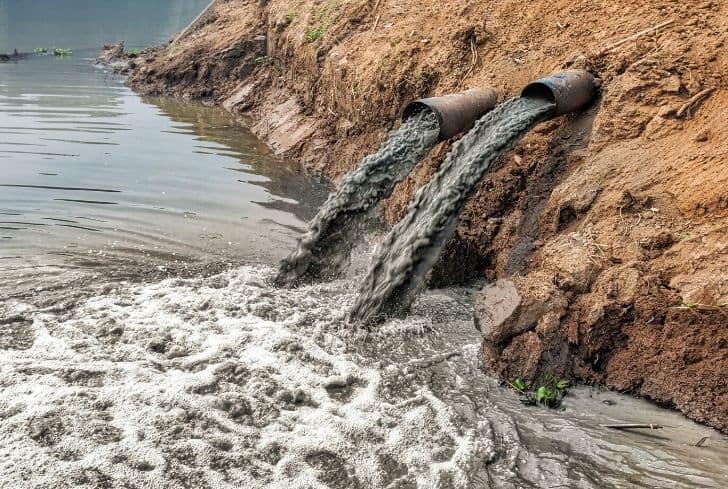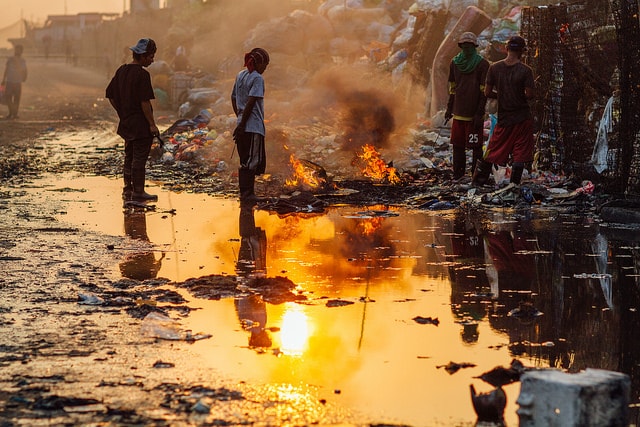7 Terrible Effects of Industrial Pollution

Industries and factories give off various pollutants into the environment including the land, air, and waters. It is estimated that about 50% of all pollution is as a result of industrial and manufacturing activities. It only displays how industries and factories are responsible for giving off toxic and dangerous materials into the environment. Illnesses, loss of life, and destruction of the ecosystem are some of the pollution outcomes that take years to manifest. Even so, there are a wide range of industrial pollution effects along with their serious consequences.
Below are some of the prime effects of industrial pollution.
- Global Warming
Global warming is among the most serious outcome of industrial pollution, witnessed on the account of the steady rise of industrial activities. Industries release into the atmosphere a variety of greenhouse gases including carbon dioxide (CO2) and methane (CH4). These gases absorb thermal radiation from the sun thereby increasing the general temperature of the earth, leading to global warming.
Global warming has several severe effects on human health and the environment. Rise in water levels, melting of glaciers, extinction of polar species, tsunamis, flooding, and hurricanes are some of the dire effects of global warming. Furthermore, global warming has threatened human survival and presented health risks such as the increased incidences of diseases like cholera, plague, malaria, Lyme disease and so on.
- Water Pollution
Pollutants discharged from the industries have widespread implications, and one of the unpleasant effects is on water bodies. Industries demand lots of water for efficient production such as cooling, cleaning, and treatment and as such, the water drawn from the water sources is never the same after use. Inappropriate contamination of used water and the discharge of different industrial waste water into water sources often result in water pollution.
In most cases, the water is contaminated with dangerous chemicals, radioactive materials, heavy metals or organic sludge. For this reason, dumping of the wastewater directly into waterways or oceans negatively impacts on marine life, humans, and the environment on various aspects.
- Air Pollution
Based on the increased counts of factories and manufacturing processes, both large and small scale, gaseous emissions have continued to compound. This makes industrial pollution one of the main causes of air pollution. The emissions from different industries contain gaseous contaminants such as sulfur, carbon dioxide (CO2), oxides of nitrogen, methane, and so on.
These gases, when too much in the atmosphere, frequently results in several illnesses and environmental hazards. Formation of acid rains, the presence of smog, and heightened incidences of respiratory disorders among humans are some of the implications of air pollution.
- Soil Pollution
Soil pollution occurs when the soil loses its fertility and structure owing to diverse natural and artificial phenomenon. Disposal of industrial wastes into landfills is among the artificial aspects contributing towards soil pollution. Industrial wastes have in them varied amounts of toxic materials and chemicals such that when deposited in landfills, it accumulates in the top soil thereby depreciating the fertility and biological activity of the soil due to soil poisoning.
Such implications eventually contribute to ecological imbalances thus creating problems in crop productivity. Apart from that, the chemicals and toxic materials in poisoned soils accumulate in plants grown in such areas causing health problems to those who consume such crops.
- Effect on Human Health
The world Health Organization (WHO) revealed that outdoor air pollution accounts for about 2% of all lung and heart diseases. WHO also underscores, around 5% of all lung cancers and 1% of all chest infections are implications of outdoor air pollution.
In brief, these statistics indicate just how industrial air pollution depreciates human health. For instance, one of the worst industrial disasters of all times that took place in Bhopal, India, in 1984 claimed the lives of more than 8,000 people and the effects were still being felt more than two decades later. This means, industrial air pollution may not manifest immediately but takes several years.
Industrial toxic and chemical wastes that are disposed into water bodies or landfills are also responsible for cancers and human cell poisoning. For instance, exposure to inorganic arsenic causes tumours to form. Above all, industrial pollutants are responsible for thousands of illnesses and premature deaths across the globe.
- Wildlife Extinction
The tendency of industrial and manufacturing processes that constantly demands production resources and repeated exploitation of raw materials has cumulatively led to the destruction of forests and the natural habitats that support wildlife.
Acts such as mining, deforestation, and utilization of water resources for industrial production have destroyed natural habitats and forced organisms to move further into the wild, exposing them to predators and intolerable living conditions. Consequently, some wildlife species have faced extinction while several others remain highly endangered. Industrial wastes, chemicals, emissions, or accidental leaks, fires, oil spills and so on have also been prime contributors to wildlife extinction.
Furthermore, these environmentally damaging materials take several years to clean-up thereby compounding the effects. For example, the BP oil accidental spill in 2012 claimed thousands of marine life, and some of them were among the rarest species on earth. Even after some time had passed, marine animals continued to die.
- Other Common Implications
Other common implications of industrial pollution encompass damage to structures and buildings and increased risks of different occupational hazards like exposure to asbestos, chemical dust, among other mineral or metallic particles.






